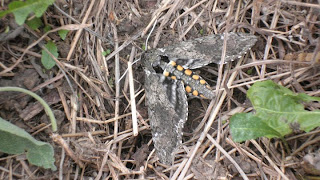
this week’s harvest
TOMATOES (F/P) The last planting of the season is giving us some real red beauties.
GARLIC (F/P) Artichoke soft-neck.
SWEET PEPPERS (F/P) It is pepper season. With many green fruits on the plants we are hoping for a couple more weeks of warm weather to keep them ripening.
CUCUMBERS (F/P) They won’t be around much longer so enjoy them while you can.
LETTUCE (F) Some small heads from the first fall planting that is starting to bolt.
YELLOW POTATOES (P) With all the rain last week we couldn’t dig the potatoes for the partial shares. Here they are now.
CHOICE OF OKRA, HOT PEPPERS, SALSA PACK OR GREEN BEANS (F) Lots of okra and hot peppers. Only a few salsa packs and hopefully a decent amount of beans finally.
CHOICE OF GREENS: KALE OR SWISS CHARD (F) We may fill in with sweet potato greens if the kale and chard aren’t enough.
HERB CHOICE: (F/P) Basil, marjoram or garlic chives.
ALSO THIS WEEK: Parker Farms delivery
NEXT WEEK: More tomatoes, cucumbers, okra and peppers. Potatoes for the full shares, lettuce for the partials. Arugula and maybe radishes. Yellow Onions.
 Spring 2004
Spring 2004
Eight years ago this November, Tom and I moved to the abandoned homestead of the family farm. The 1930s era farmhouse and the 100+yr old barn were still standing although wildlife seemed more at home in them in the beginning than we did. We had apprenticed on organic vegetable farms for two years and thought we knew what we were getting into. In reality we found that while the apprenticeships were invaluable, there really is no way to know how to farm a particular piece of land than through doing it.
We knew that our topsoil was a silty clay loam with a clay subsoil beneath. We would be farming wind-blown soil, or loess, blown here during the end of the last ice age as the glaciers receded. The Loess Plateau extends up through Iowa and is one of the most fertile regions of America’s Breadbasket.
That is all fine and dandy until we realized what lay below our pretty glacial dust. Good ole Missouri clay. Just like the ponds that dot every farm around, our soil holds water. The clay forms an impermeable layer that allows excess moisture to pool and suffocate the roots of tender plants. We learned this lesson our second year of farming when all of our tomatoes and potatoes rottted in what had been productive ground the season before. Lucky for you, eight years later we have a few strategies that are helping us cope with the 7 inches of rain over the past 2 weeks. Here are a few examples of how the crops are doing.
 Bolting lettuces after the rain.
Bolting lettuces after the rain.
It’s interesting that different varieties respond differently to the weather. While the Forellenschluss and Quattro Stagioni lettuces are bolting, the New Red Fire in the foreground is holding firm.
Summer squash with mildew
Right next door the sweet potatoes show no signs of stress.












